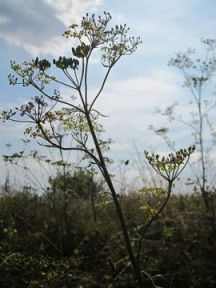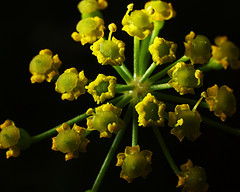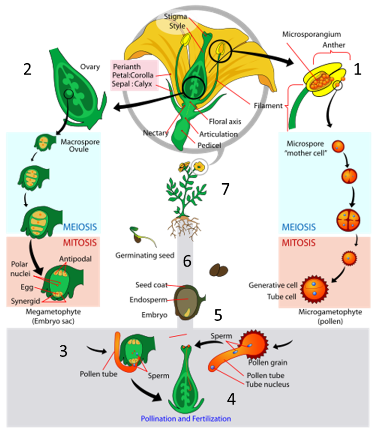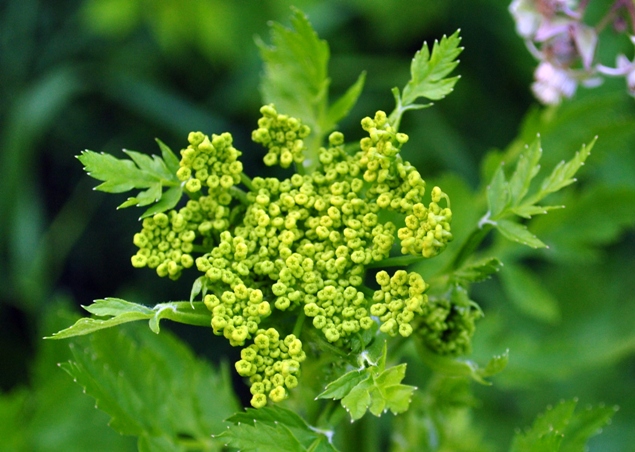This is how I do it!
I am a biennial plant, which means that in my first year of life,
I don’t produce flowers or seeds, and in the se cond year of my life,
I die after producing seeds. I begin growing in March, and bolt in
early April. Bolting is the production of flower stalks. I can
flower any time between mid-May and October, depending on my
geographic location. In Northern regions, I lose all my leaves in
the winter, but in Southern regions, I usually keep a few of my
leaves throughout the year.
cond year of my life,
I die after producing seeds. I begin growing in March, and bolt in
early April. Bolting is the production of flower stalks. I can
flower any time between mid-May and October, depending on my
geographic location. In Northern regions, I lose all my leaves in
the winter, but in Southern regions, I usually keep a few of my
leaves throughout the year.
Like most plants, I exhibit an alternation of generations, which means that both my gametophyte and sporophyte generations are multicellular. Since I am an angiosperm, I display a dominant sporophyte generation; my gametophyte is much smaller and dependent on my sporophyte. The plant that you usually see is my adult sporophyte. There are several characteristics of an angiosperm that are unique and imperative when understanding my life cycle. These include:
Fruit- a fruit is a developed ovary that protects my seeds. I,
Pastinaca sativa, have fruits that each contains two mericaps and
one seed. They are 5-7mm, flattened, and schizocarpic. Because I am
schizocarpic, at fruit maturity my two mericaps split.
Flowers- flowers are my reproductive structures that allow for specialized pollen transfer. My flowers are comprised into umbels that are about 15-20cm wide and consist of approximately 100 flowers on each umbel. I have umbels so I can attract pollinators, which I use as my mode of pollen transfer. To find out what types of organisms pollinate me, check out the Interactions page!
Now that you know the function of fruit and flowers, let’s discuss the steps of reproduction.
 1.
Microsporangium undergoes meiosis to produce haploid microspores,
which eventually become pollen. This occurs in the anther
(male part of the flower).
1.
Microsporangium undergoes meiosis to produce haploid microspores,
which eventually become pollen. This occurs in the anther
(male part of the flower).
2. Megaspores are produced in
the ovules, and then one megaspore undergoes mitosis to produce a megagametophyte, or embryonic sac.
3. Pollination occurs, usually
by an insect, and pollen gets onto the stigma of a flower. In
turn, a pollen tube is generated that reaches down the style to the
ovary.
4. The pollen travels down to
the ovary where one sperm fertilizes the egg producing a zygote.
Another sperm forms the endosperm. This process is known as
double fertilization.
5. The zygote turns into an
embryo which is packaged along with the endosperm to form a seed.
6. My seeds are dispersed by the
wind, and they go into the soil until they are ready to germinate.
7. After germination, the zygote
will develop into a sporophyte, and the process repeats.
Next, learn about my Interactions with other organisms,
or if you’ve had enough of me, head Home!
